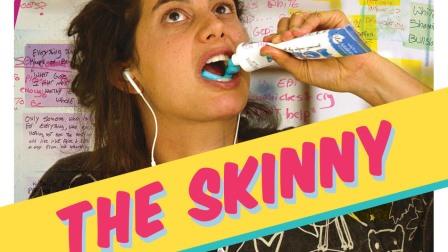...in the Community

The after-school special is over: How millennials want to talk about eating disorders today
By Matt Petronzio, Mashable
Growing up, Jessie Kahnweiler thought she understood what addiction entailed: alcohol, drugs and sex, the vices that saturate our media.
But for more than 10 years, she didn't realize she had her own type of addictive relationship — with food. Kahnweiler had an eating disorder. And she hadn't figured it out sooner because no one talked about it enough. Particularly in entertainment media, there were few examples of people to learn from and relate to.
"Any time there's talk of eating disorders or body image, any of that shit ... it's in an after-school special sarcasm, or a totally dark Lifetime drama," Kahnweiler tells Mashable.
So, this independent filmmaker turned the tables.
Kahnweiler's latest project, a new comedic web series called The Skinny, focuses on a feminist comedian living in Los Angeles, navigating life's normal ups and downs while trying to overcome her bulimia.
The series is part of larger trend of young people using online platforms to tell their stories and experiences with eating disorders, especially around National Eating Disorder Awareness Week, which starts Monday.
According to the National Eating Disorders Association (NEDA), 20 million American women and 10 million American men grapple with "a clinically significant" eating disorder at some time in their lives. The number of new cases of eating disorders has increased every year since 1950, and anorexia nervosa has the highest mortality rate of any psychiatric disorder.
"These illnesses do not discriminate," Claire Mysko, NEDA's director of programs, tells Mashable. "We're talking about people of all ages, of all ethnicities. We're talking about men and women. We're talking about people of all sizes."
Youth are especially impressionable. NEDA states that 40-60% of elementary school girls (between the ages of six and 12) are concerned about their weight or about becoming too fat, and females with anorexia nervosa between the ages of 15 and 24 have a mortality rate 12 times higher than that all other causes of death.
But now, long since the days of the after-school special, what resonates with youth today? The answer is on (responsible) social media.
Platforms like Tumblr and Instagram are increasingly influential, allowing youth to create their own content, says Mysko, who regularly works with teens and young adults at NEDA's offshoot online community, Proud2BMe. Young people write blogs, post inspiring photos and messages, make videos and build an overall healthy community as tools for recovery.
Despite the obvious dangers, these communities are good at self-policing. For instance, communities like Tumblr are very defensive of any celebrity who gets body-shamed for not fitting into the thin ideal.
Many celebrities aren't afraid to speak out about their experiences with eating disorders, such as Lady Gaga, Russell Brand and Kate Beckinsale. Demi Lovato made headlines at the end of last year for tackling some of the misconceptions of eating disorders.
The influence extends beyond pop stars and actors. Teens respond to plus-size fashion bloggers, says Mysko. "A stream of content where you're seeing bodies that look more like yours is really powerful," she says.
We're in a totally different media landscape since the days of the after-school special. Those shows featured young, white girls of a certain social class "dying to be thin," but represented in a very extreme way, says Mysko. "When you look at how eating disorders are typically represented in mainstream media, it's a pretty narrow picture of what eating disorders look like."
She is careful to say those extremes do exist, but most people who struggle with eating disorders, which are very complex, don't fit that picture so perfectly. This leads many people, like Kahnweiler, to not even know they have an illness, or to believe it's less serious than it is.
For The Skinny, Kahnweiler equated comedy with truth. She never set out to "make bulimia funny"; she's just trying to be honest about her experience, and hopefully get other people talking, too.
She has used humor before to tackle serious issues. Her 2013 short "Meet My Rapist" deals with her rape.
Her dream is to one day Google "eating disorder art," "eating disorder comedies" or "eating disorder theatre" and have millions of results come up, showing people who feel empowered enough to talk about their experiences.
But Kahnweiler and Mysko both acknowledge the dangers of social media. Trolls and content surrounding eating disorders can be triggering and harmful. "Thinspiration" content, for example, which celebrates extreme thinness, is couched in deceptively motivational language. It's important to do your research, and find content and platforms that responsibly engage the larger conversation.
When you do, it could make all the difference.
"I feel like the Internet is the answer," Kahnweiler says. "That's the future: autonomous storytelling ... It's gold."
Editor's note: Matt Petronzio is the assistant features editor at Mashable, where he helps guide the site's features content from editing to publishing and covers the social good beat. This piece originally posted on Mashable as was reposted with permission. If you or a loved one is suffering from an eating disorder, you're not alone. Organizations like the National Eating Disorder Association (U.S.), National Eating Disorder Information Centre (Canada), The Butterfly Foundation (Australia), the National Centre for Eating Disorders (UK) and We Bite Back can help.
Source: www.crisistextline.org
